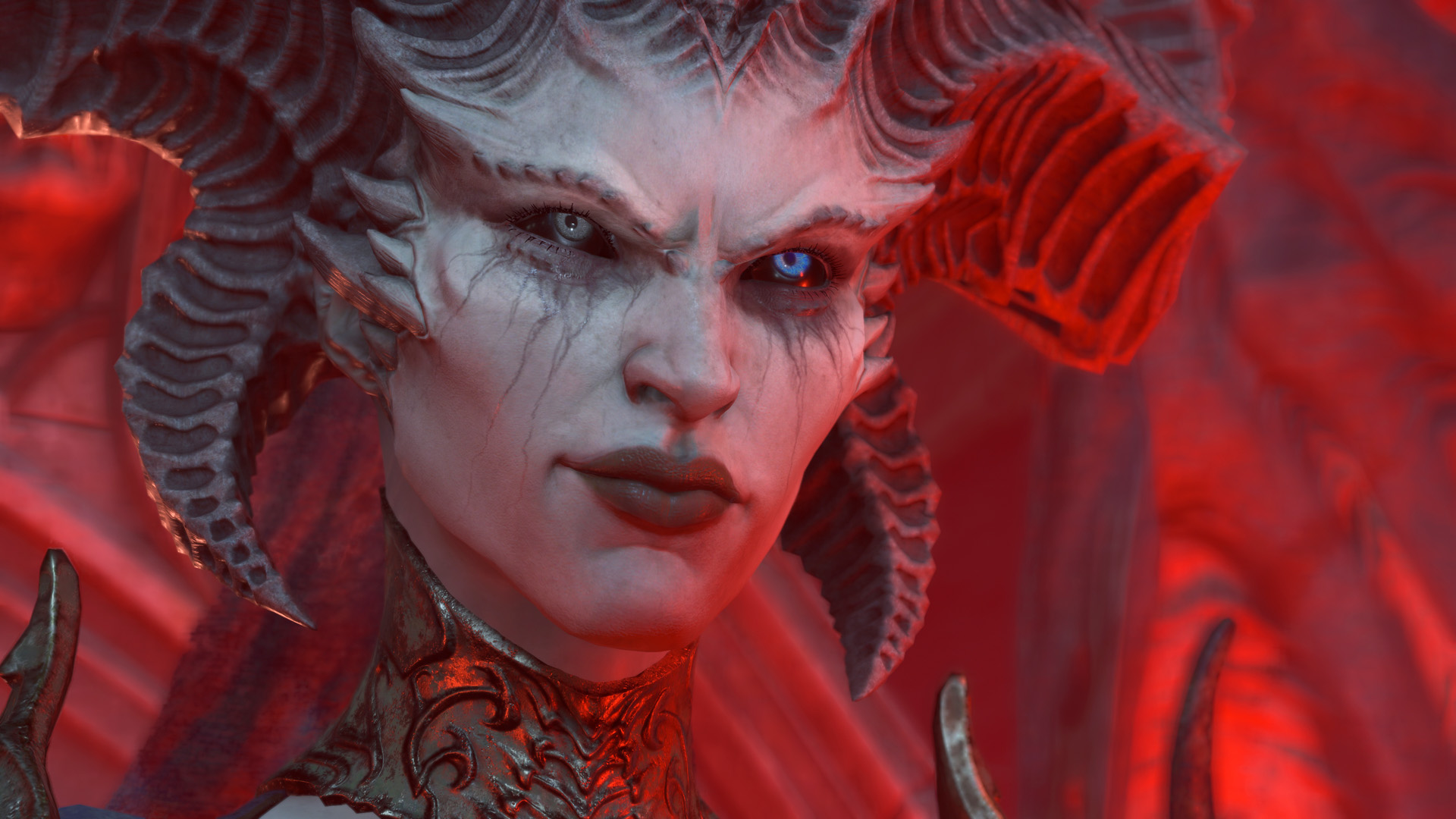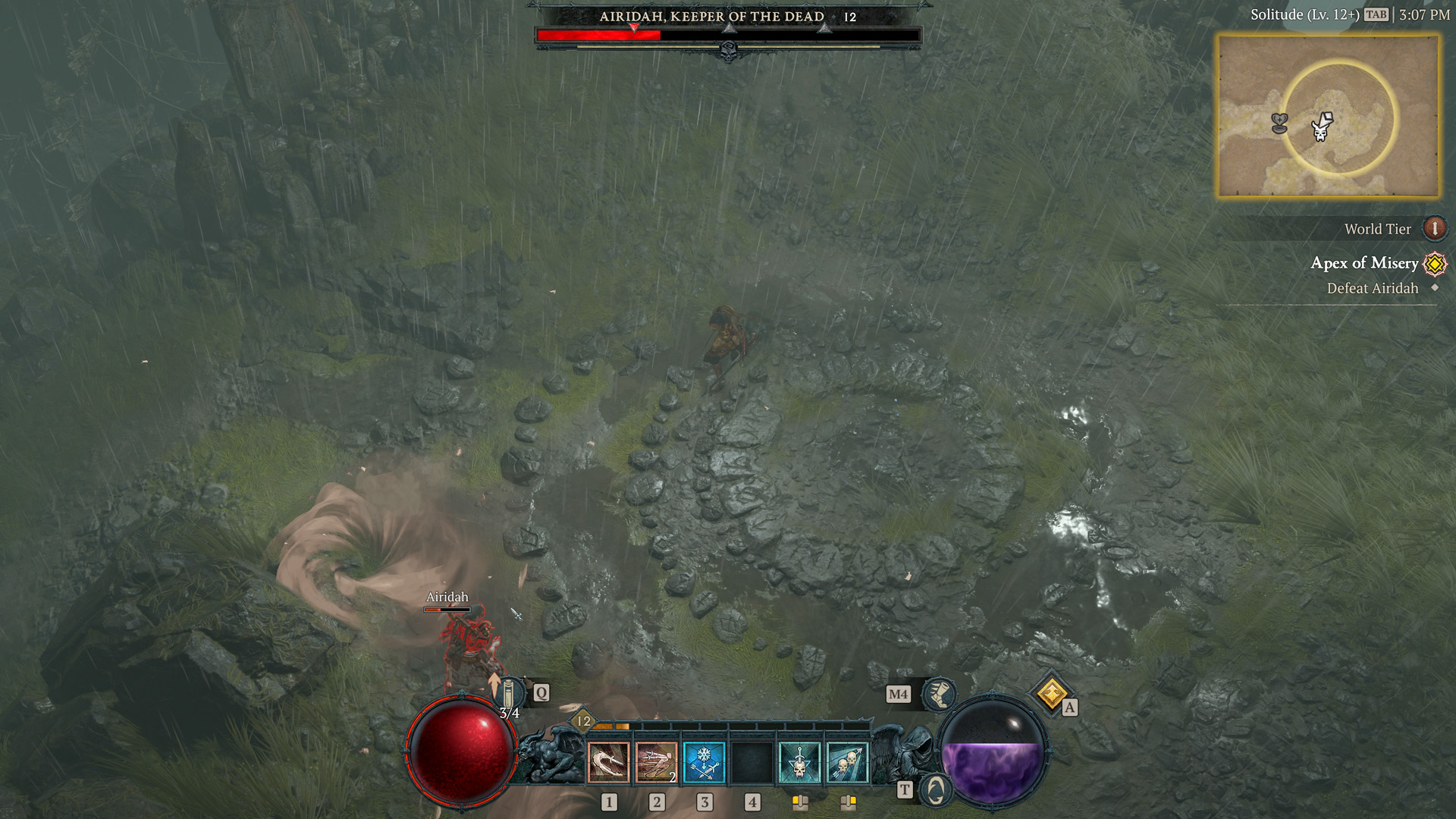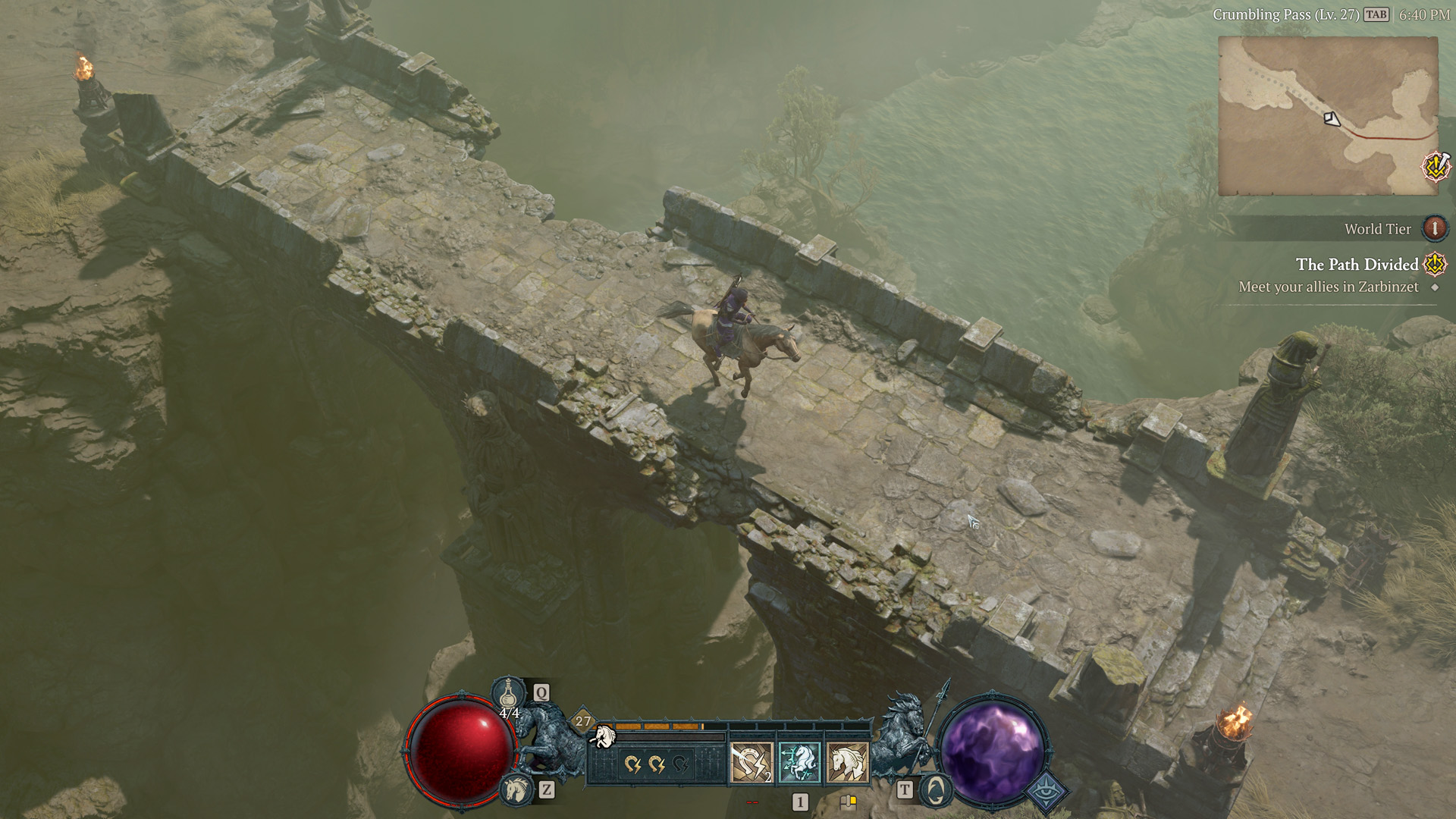
When it comes to clicking demons until glowing loot pops out, Diablo 4 is the most Diablo any Diablo has ever been. That delicious loop that's fed Diablo players for years is all over Diablo 4, as it has been in every other Diablo game, even Diablo Immortal. Nobody does it quite like Blizzard: it takes seconds for your character to blanket the screen in light, leveling up and earning their first skill point—the first bite in a buffet of class-based abilities.
The more I play Diablo 4, the more I'm reminded of Warcraft's transition from a real-time strategy series to an MMO, a genre shift that capitalized on people's desire to embed themselves directly into the fabric of Blizzard's fantasy world and live in it. Even though I started with WoW and then discovered the series backwards, I can't deny that some of Warcraft's original identity was lost in the process.
Diablo 4 feels like an echo of that same point in history. It may still be an isometric hack-and-slasher but all of its familiar systems exist in a significantly different context. Diablo 3 was a live service game before "live service" was a term anyone knew; Diablo 4 embraces live service from the start. The tormented world of Sanctuary is now a platform for Diablo's endless grind, a playground for legendary heroes to earn a few tiers on their battle pass. It's not sacrilege for a series that has always thrived on this type of play to expand on infinite repetition, but by reconfiguring its entire structure around what used to be relegated to the endgame, Diablo 4 sacrifices a significant part of its appeal for me.
I've completed the six-act campaign and spent over 20 hours carving through dungeons and am finding it hard to continue in an action RPG that spends so much of its time teasing the next thing instead of indulging in the present.
Diablo 4 is like playing a new MMO expansion where every piece of loot is a temporary step towards the next. Instead of picking up rare and legendary items that modify your skills and encourage you to play your class differently for a session or two, you're mostly given meager hors d'oeuvres for the feast to come at level 50 and onwards.
Tonal troubles

Diablo 4's RPG structure is far too transparent for any of it to feel elegantly rooted in the fiction.
After the events of Reaper of Souls, Sanctuary has become a bit of a Diablo 4: Apocalypse Reloaded situation. What's left of the human population survive in ramshackled settlements and dusty cathedrals. Most of Diablo 4's campaign drenches you in human misery through side quests and dungeons that are grotesque to the point of absurdity. I couldn't walk to a town without stepping (and inexplicably exploding) the half-eaten remains of a horse or passing by bodies impaled onto wooden spikes.
Diablo 4's tonal and aesthetic "return to darkness"—a tagline that promises Diablo 3's biggest haters that this one is for big strong adults who liked Diablo 2—is so afraid of levity and color that it misses what made Diablo 2 and 3 so evocative. Diablo has always had to balance its dark fantasy world with your character's ridiculous presence in it. As you fling godlike powers at buckets of demons and the occasional treasure goblin, the previous games, whether by the technical limitations of the time or differing creative directions, found a way to make the eternal conflict between heaven and hell worth caring about—largely by injecting surrealist art into otherwise mundane environments and having characters like Deckard Cain provide a hit of gravitas.
Somehow Diablo 4 didn't give me a truly threatening villain or dungeons with demon statues puking blood red lava until the last third of the campaign. If I wanted to fall asleep in gray dungeons and abandoned cathedrals, there are plenty of other action RPGs out there. I come to Diablo to feel like I'm cutting demons apart in a death metal band's airbrushed album art. This is a series where the final boss is literally in the title; the lack of subtlety is its strength.
Diablo 4 adopts a muted aesthetic and a slow-burn narrative that seems desperate to mimic Game of Thrones or Sony's God of War reboot, but it's constantly in tension with how massively unsubtle the series' worldbuilding has always been. "It was probably demons," would have been an exceptionally useful dialogue choice to have for every person who asked me if I could investigate what happened to their loved ones. And, I'm sorry, I can't take it seriously when a sad quest where I end the life of a tortured man tied to a tree ends by giving me the spear I used as a temporary weapon upgrade.

Only when Diablo 4 embraces the over-the-top horror of a world being ripped apart by two selfish factions is it able to wield this stronger focus on narrative with its well-oiled systems. One early dungeon set in a monastery had me chasing after a lead on Lilith, the demonic mother of Sanctuary who is positioned early on as the primary villain. I expected demons and dead monks but what I found were eerily empty hallways with no enemies in sight. In the distance I heard doors slam shut and screaming just outside my view. I was following in the bloody footsteps of a murderer, like I was chasing after another Diablo player gone rogue. The complete silence, with only the sound of my character's footsteps echoing through the halls, made for a surprisingly chilling sequence.
Blizzard's command of Diablo and its ability to upend years of well-established expectations rarely appears in the quests scattered around this world. Everyone has a few lines of dialogue before they send you to a dungeon or a location where you conveniently pass by some open world activities, like randomly spawning world events or objective-driven Strongholds. Diablo's RPG structure is far too transparent for any of it to feel elegantly rooted in the fiction.
Locked in
I wish it was easier to ignore Diablo 4's tonal stumbles once you're properly knee-deep in demons. I played rogue, Diablo 4's ranged and melee hybrid class that echoes both demon hunters and amazons from the previous games. I was a fan of Diablo 3's runes, which let you swap skills and modify them on the fly, and Diablo 4's skill tree suggests a similar level of customization. You choose from a healthy variety of simple abilities at the start and then work your way into passive skills that augment your attacks with status afflictions.
My rogue's arrows inject shadow bombs into her enemies that explode when they die, turning large packs of mobs into firework shows. Against single targets, I can lace my arrows with poison to keep ticking damage on a boss while I dodge their MMO-like, telegraphed attacks. There are few things as satisfying in videogames as setting off a chain reaction of kills and damage numbers in a horde of demons.

By level 30, I was deep enough in the skill tree that respeccing incurred a significant gold cost and risk. The most build-defining skills sit at the top of the skill tree, which also happens to be the points you can't individually refund because later skills unlock based on what you chose. You have to reset the entire thing to radically alter your playstyle.
Just like the repetitive side quests, I imagine this serves the balance of the endgame, locking you into a build so you can't swap for every challenge you face. But the appeal of Diablo for me is the sheer amount of creativity you can apply to the skills in your arsenal.
I love my current build, but what if there's something even better? In the past, rare and legendary items gave you free skill points and modifications to your abilities to encourage you to experiment. Now, the powerful items that don't come with synergistic stats are a waste of inventory space. You can craft your own legendaries by completing dungeons for class-specific affixes or by extracting affixes and moving them to other items, but it ignores the fun of a loot game: the surprise.
Nothing has convinced me the endgame is so brilliant that it's worth stripping everything fun out of the leveling process.
It's possible that you'll earn enough gold or legendary items to loosen these restrictions in the endgame activities. Diablo 4 spawns randomized events that you can complete every day for a sack of items and higher world tier difficulties increase your gold gain. But, once again, Diablo 4 sacrifices one of Diablo 3's strongest aspects to prepare you for the endgame, where the real game begins, apparently.
So far, nothing has convinced me the endgame is so brilliant that it's worth stripping everything out of the initial leveling process. The thin storytelling doesn't help either—thankfully you can skip it on subsequent characters. Diablo 4 is a live service game that puts an insulting amount of effort into trying to convince you it's not. It's backwards; trying to build up to the most robust part of itself instead of starting with it. The moment entering a fresh dungeon feels more like a chore than a ride is the moment Diablo loses me, and I've been worryingly close to that feeling in my time with it so far.
An exciting, modern version of Diablo is in here—I can see parts of it poking through the surface—but I'm starting to lose patience waiting for it to show its face.







